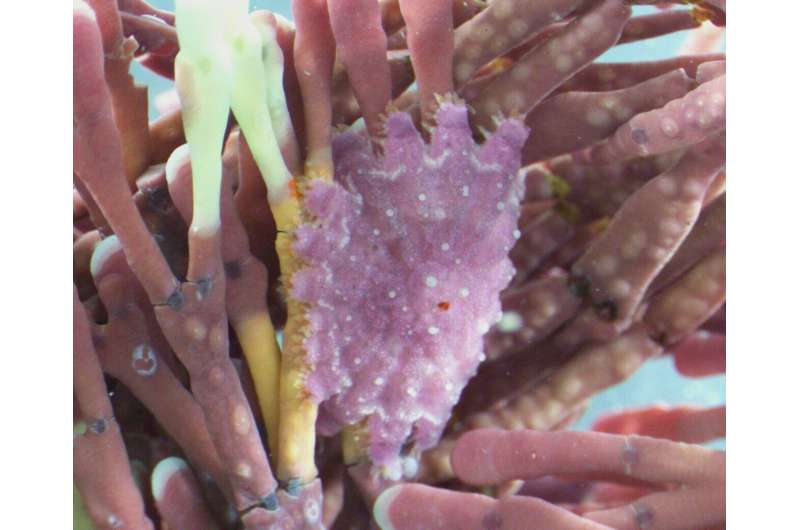Eating habits of baby predator starfish revealed

Adult crown-of-thorns starfish pose one of the greatest threats to the Great Barrier Reef due to their coral diet. Marine life, including fish, crabs, seahorses, and turtles, depend on coral as a food source, as well as for shelter. No coral means no smaller creatures. This has a domino effect, ultimately decimating the food chain and ecosystem. Learning more about this starfish is crucial for efforts to save the Reef.
New research from Dione Deaker, a Ph.D. student at the University of Sydney, and her adviser Professor Maria Byrne, along with colleagues at the National Marine Science Centre, Coffs Harbour, adds another piece to the crown-of-thorns puzzle. The research team has already shown that baby starfish can survive on algae for up to six and a half years instead of switching to a coral diet at four months of age, per their typical growth pattern. Now, they have discovered that juveniles can eat a range of algae, not just the algae they are thought to prefer; crustose coralline algae. They can even subsist on biofilm—microorganisms that cover the sea floor, including bacteria and protists—to avoid starvation.
"The diet flexibility of juvenile crown-of-thorns starfish complicates our ability to age this species and, therefore, our ability to predict devastating outbreaks of adults on reefs," Ms Deaker said.
"There is potential for reserves of juveniles to accumulate on the reef and produce outbreaks when favorable feeding conditions arise.
"There is no doubt that these starfish are extremely opportunistic and resilient when their preferred food source is limited. We now demonstrate that this resilience also applies to the youngest juveniles."
The researchers came to their conclusions, published in influential journal PLOS ONE, after feeding newly settled juveniles either crustose coralline algae, a different kind of algae (Amphiroa) or biofilm in a controlled environment, and then monitoring their growth.
Small juvenile crown-of-thorns starfish are just millimeters in diameter. Once they switch to a coral diet, they can grow to up to a meter wide.
More information: Dione J. Deaker et al. Diet flexibility and growth of the early herbivorous juvenile crown-of-thorns sea star, implications for its boom-bust population dynamics, PLOS ONE (2020). DOI: 10.1371/journal.pone.0236142
Journal information: PLoS ONE
Provided by University of Sydney



















